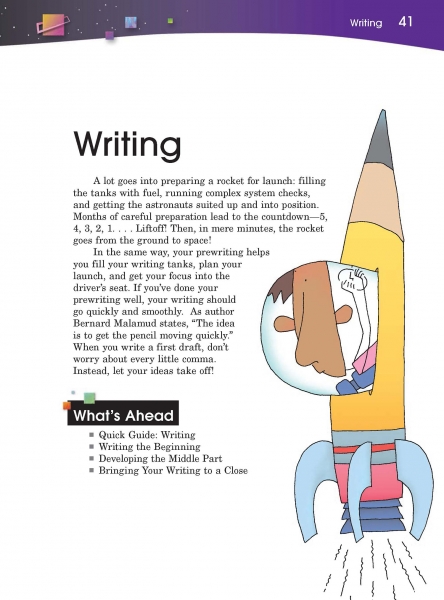Page 041 from

Start-Up Activity
Writing a first draft is the process of connecting the ideas collected during prewriting. If students have done the necessary gathering and planning, they should be more than ready to get started.
Have a volunteer read the introduction. Then ask students why an initial writing is called a first draft rather than simply a draft. (Possible response: A first draft is the first look at a developing writing idea.) Also ask students why they shouldn’t “worry about every little comma” when developing a first draft. (Possible response: Worrying about the placement of every punctuation mark could stop the flow of ideas.)
Think About It
“A first draft is a discovery draft—a vision of what might be.”
—Donald Murray

Start-Up Activity
Writing a first draft is the process of connecting the ideas collected during prewriting. If students have done the necessary gathering and planning, they should be more than ready to get started.
Have a volunteer read the introduction. Then ask students why an initial writing is called a first draft rather than simply a draft. (Possible response: A first draft is the first look at a developing writing idea.) Also ask students why they shouldn’t “worry about every little comma” when developing a first draft. (Possible response: Worrying about the placement of every punctuation mark could stop the flow of ideas.)
Think About It
“A first draft is a discovery draft—a vision of what might be.”
—Donald Murray


